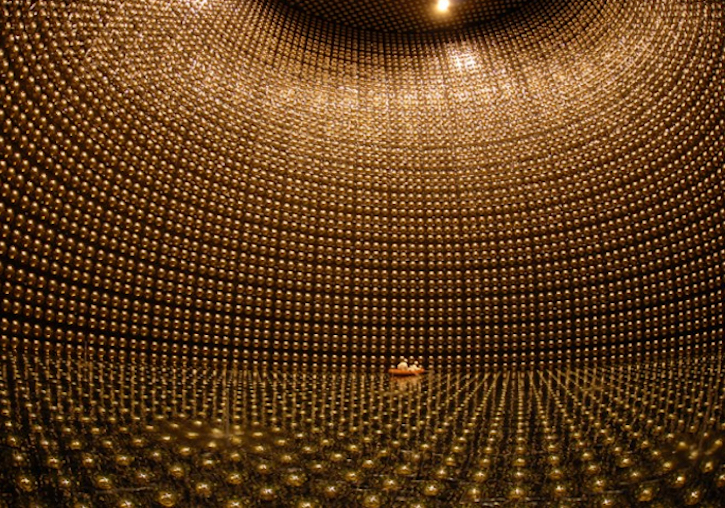Apr 24 2020
Scientists from the Institute of Corpuscular Physics (IFIC), the Physics Institute of Other Energies (IFAE-Barcelona), and the Autonomous University of Madrid have discovered a fundamental property of neutrinos that had not been quantified to date.

Image Credit: RUVID.
The study represents a crucial step toward understanding whether neutrinos act differently in their matter and antimatter forms. The study findings have been published as the front-page article of the Nature journal.
T2K, or Tokai a Kamioka, is a particle physics experiment situated in Japan, where neutrino oscillations are studied by research groups from 12 countries. The T2K collaboration has reported the new outcomes, the most precise ones achieved to date—the parameter that controls the disruption of the matter-antimatter symmetry in the oscillations of these particles.
The experiment unravels, for the first time, a fundamental property of neutrinos that had not yet been quantified. This is a vital step to know whether neutrinos and antineutrinos have different behaviors that are not symmetrical, as proposed by the laws of a majority of the physical phenomena in this field. These outcomes, using data collected up to 2018, are the ones reported in the scientific journal Nature.
Most of the physical phenomena are explained as laws that estimate a symmetric behavior for matter and antimatter. In terms of physics, it is called charge-parity symmetry, or just CP symmetry. But this symmetry is not universal, as is evident from the current composition of the universe, the antimatter content of which is extremely small.
The Big-Bang Theory presumes that the universe was made with similar amounts of matter and antimatter. To arrive at the existing condition, there must have been a violation of the CP symmetry.
To date, the CP symmetry violation had been observed only in the physics of subatomic particles called quarks. However, the magnitude of this violation is not sufficiently large to account for the composition of the current universe. T2K is searching for a new source of the CP symmetry violation in the neutrino oscillations, which would be apparent as a difference in the probability of neutrino and antineutrino oscillation.
The T2K experiment makes use of neutrino and antineutrino beams produced with the help of the proton beam from the Japan Proton Accelerator Research Complex (J-PARC), situated in Tokai, on the east coast of Japan.
Spanish contribution
The T2K experiment has been developed and run by an international collaboration currently including more than 500 researchers from 68 institutions of 12 countries (France, Canada, Italy, Germany, Poland, Japan, Spain, Russia, United States, United Kingdom, Switzerland, and Vietnam). It is financially supported mainly by the Ministry of Culture, Sports, Science and Technology (MEXT) of Japan.
Spain contributes with three research teams, of which two—IFAE and IFIC—have taken part in the design, development, and operation of the experiment for more than 15 years, performing relevant contributions to the investigation of neutrino oscillation. The Autonomous University of Madrid recently joined the group.
The research activity was financially supported by Spain through the Ministry of Economy and Finance and the Government of Catalonia, with the aid of the National Centre of Nuclear Particles and Astroparticles (CPAN).